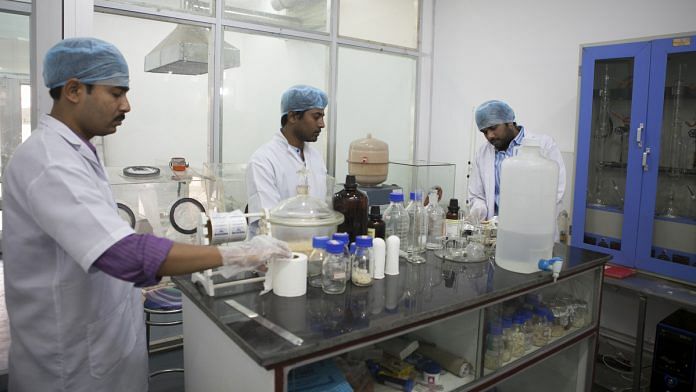Kanpur: Developed by engineers at IIT-Kanpur, ‘Hridayantra’ has the potential of saving the lives of patients awaiting a heart transplant and that too at a tenth of the cost of the currently available options across the world.
To be implanted just below the heart, the small battery-operated pumping device comes with a rotating motor which helps pump blood throughout the body — giving the patient a new lease of life.
The idea of using an artificial pump to aid a failing heart has been around since the 1920s.
“There are total artificial heart pumps and there are Left Ventricular Assist Devices (LVAD), but these can cost over Rs 1 crore a piece, which is far from being accessible even for the upper middle class in India,” said Amitabha Bandyopadhyay, a professor at IIT-Kanpur and principle investigator of the project.
LVADs are often seen as a ‘bridge to transplant’ — a temporary solution till a heart becomes available for transplant. However, with ‘Hridayantra’, the research team hopes to find a ‘destination therapy’ — a solution that would work for a lifetime.
Bandyopadhyay and his team faced the challenge of creating an innovative device that is not only advanced and state-of-the-art, but also relatively more affordable.
According to Bandyopadhyay, it was reputed cardiologist Devi Shetty, founder of Narayana Health, who suggested that IIT-Kanpur work on the project.
The team behind the device consist of fellows with engineering background, but no experience in the medical field. To learn more about heart failure, they visited hospitals, interacted with doctors and patients and even observed an open heart surgery to understand what they had to build.
Also Read: Faster healing, less pain: IIT Guwahati researchers create AI tool to predict how fractures heal
Heart failure most common cardiac issue in India
Every year, about eight to ten million patients suffer from heart failure. It is the commonest cardiac cause for hospitalisation in India, with 1 per cent of the general population being affected annually.
In this condition, the heart becomes weak and is unable to pump adequate blood to meet the body’s needs. Such patients can barely walk, and even talking may become too strenuous in some cases.
Usually, patients who have reached the terminal stages need to undergo a transplant. However, finding the right donor heart can be a challenge in a country like India where the number of willing organ donors are very low to begin with. Moreover, the blood groups of the donor and the patient need to be matched.
Even then, one of the most worrying risks after a heart transplant is that the patient’s immune system may end up rejecting the donor heart. Every heart transplant recipient receives medications to prevent rejection (immunosuppressants) — which in turn increases the risk of fatal infections and even cancer.
Patent granted for the device
The team has already been granted a patent for the design of the device, and is currently working on putting together a perfect prototype of the device. There are two significant challenges that need to be overcome before the device can be taken to animal trials.
“First, we have to find the right coating or texture of the metal to prevent blood clotting. Two cells are of particular interest. The first is the red blood cells — which should not die when they come in contact with the surface. The other are platelets — which should not get activated. If platelets get activated, there will be blood clots leading to further complications,” Bandhyopadhyay explained.
The team is also trying to work on making the impeller — the rotor used to increase the pressure and flow of a fluid — contactless using magnetic levitation. At present, the impeller is supported by a shaft. Instead, they want to make it float in the air. And it has to be done in a way that no matter the orientation of the patient — whether they are standing, sitting, bending or lying down — the impeller does not move from its position.
The team has completed the creation of an elaborate system that mimics the pumping function of the heart — complete with a biofluid that mimics the viscosity of human blood — a set up that helps them test the prototypes of the device before the approval of animal trials.
A long way to go
Even after these challenges are overcome, the ‘Hridayantra’ has a long way to go. Once the device passes the lab tests, it will have to undergo animal trials which is likely to start by March.
The team is hoping that they will either be able to do it in pigs or cows as their heart sizes are similar to that of humans. “This will probably have to be done abroad,” Bandyopadhyay said, adding that only if animal trials turn out successful, the team will be able to carry out human trials.
“The device is not going to be cheap because it will be the most advanced version of LVAD available so far. However, we are trying to keep the cost of the product at around Rs 10 lakh — which is about a tenth of the cost of currently available options in the market,”
he said.
(Edited by Geethalakshmi Ramanathan)
Also Read: Chase your dog for a minute 3-4 times a day and you’re likely to live longer, study finds



